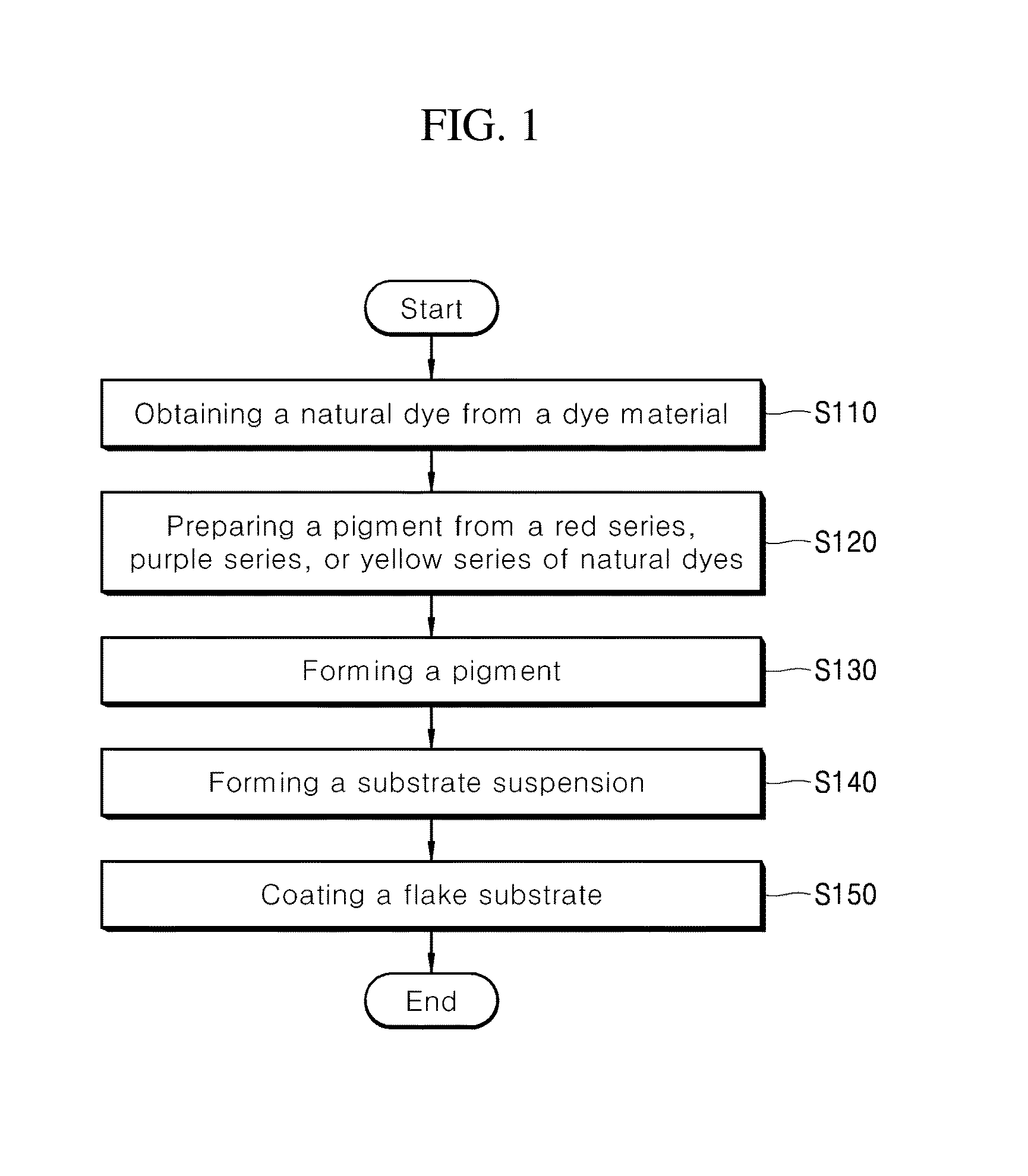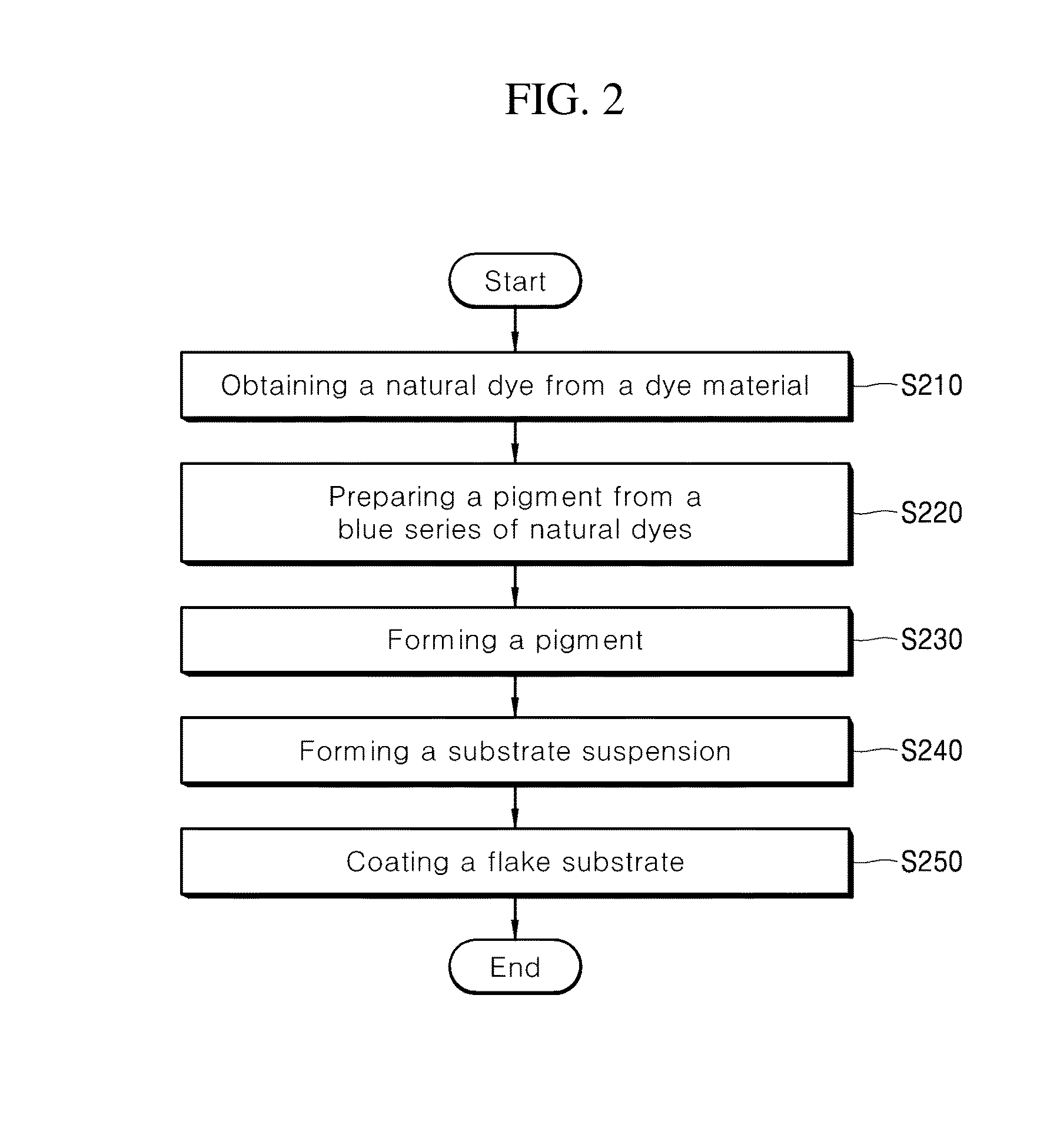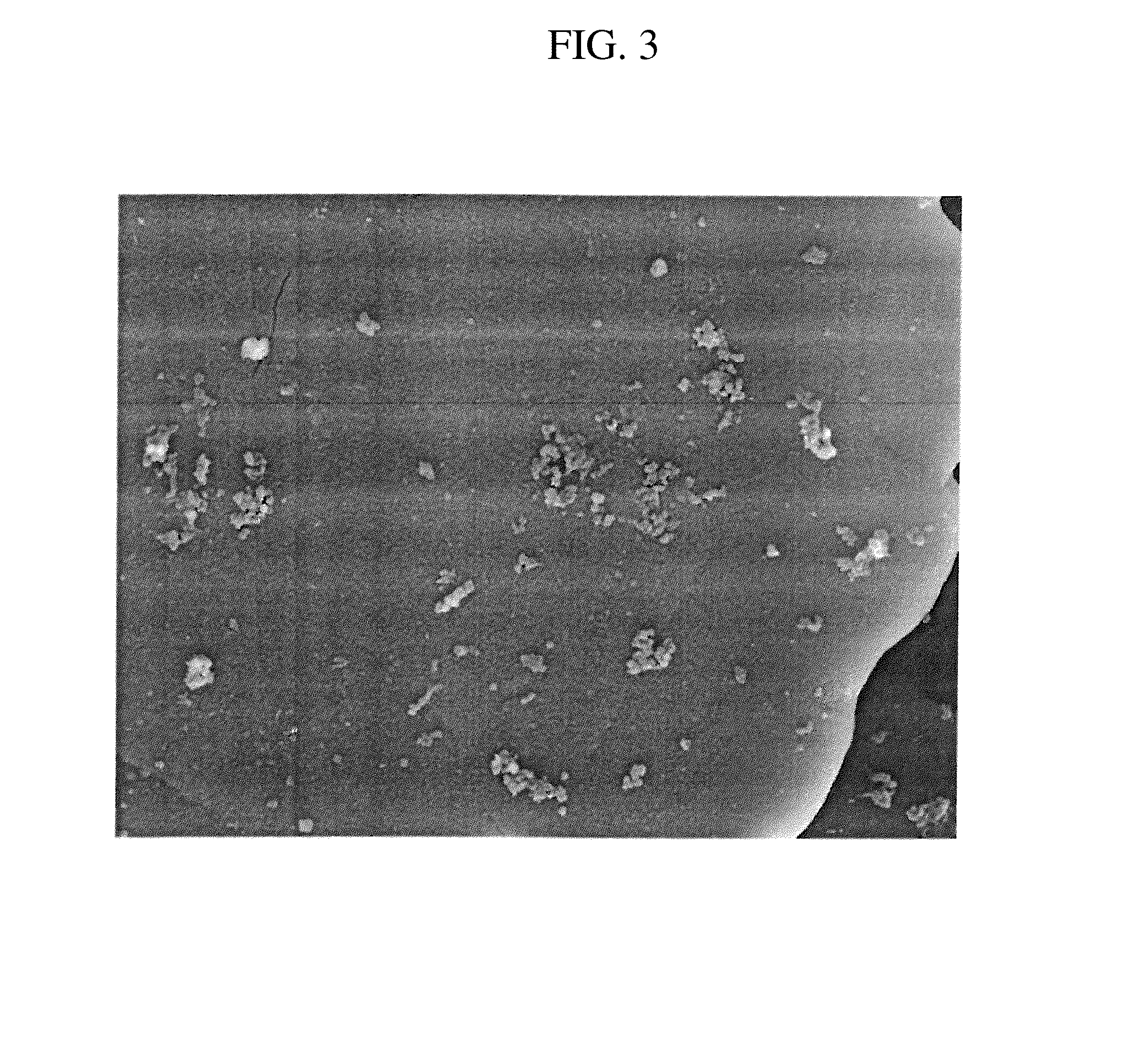Colored glossy pigment using vegetable type natural dye and method for preparing same
a vegetable type, gloss pigment technology, applied in the direction of pigment treatment with macromolecular organic compounds, make-up, coatings, etc., can solve the problems of high cost, poor durability and heat resistance of inorganic pigments, and imposed raw materials restrictions
- Summary
- Abstract
- Description
- Claims
- Application Information
AI Technical Summary
Benefits of technology
Problems solved by technology
Method used
Image
Examples
example 1
Preparation of Red Series of Natural Pigment
(1) Preparation of Natural Red Pigment
[0069]A natural dye extracted from Caesalpinia sappan which is a dye material of the natural dye (including at least one mixture selected from Caesalpinia sappan bark extract, or Caesalpinia sappan stem powder) was heated in a deionized water (or organic solvent), and the extracted dye solution was concentrated and dried in a vacuum to prepare a dye. 10 parts by weight of the dye of Caesalpinia sappan was transferred into a 2 L beaker, and 100 parts by weight of deionized water and 30 parts by weight of CaCl2 was introduced thereinto and stirred at 200 rpm. At this time, the reaction temperature was set to 40° C. and potassium hydroxide was added. pH was adjusted to 7.
[0070]Once precipitates were generated while stirring the solution, the precipitates were dehydrated, dried and then ground for use as a pigment.
(2) Preparation of Natural Red Pigment Ink
[0071]To a 500 mL beaker, 140 parts by weight of de...
example 2
Preparation of Yellow Series of Natural Pigment
(1) Preparation of Natural Yellow Pigment
[0079]A natural dye extracted from Gardenia jasminoides which is a dye material of the natural dye was heated in a deionized water (or organic solvent), and the extracted dye solution was concentrated and dried in a vacuum to prepare a dye. 20 parts by weight of the dye of Gardenia jasminoides was transferred into a 2L beaker, and 100 parts by weight of deionized water and 30 parts by weight of AlCl3 was introduced thereinto and stirred at 200 rpm. At this time, the reaction temperature was set to 60° C. and sodium hydroxide was added. pH was adjusted to 7. Once precipitates were generated while stirring the solution, the precipitates were dehydrated, dried and then ground for use as a pigment.
(2) Preparation of Natural Yellow Pigment Ink
[0080]To a 500 mL beaker, 140 parts by weight of deionized water and 60 parts by weight of Gardenia jasminoides pigment were added, and subjected to a milling at...
example 3
Preparation of Natural Blue Series Pigment
(1) Preparation of Natural Blue Pigment / Natural Blue Pigment Ink
[0088]A natural dye extracted from Persicaria tinctorium which is a dye material of the natural dye was heated in a deionized water (or organic solvent), and the extracted dye solution was concentrated and dried in a vacuum to prepare a dye. 20 parts by weight of the dye of Persicaria tinctorium was transferred into a 250 mL bottle for ball milling, and 80 parts by weight of deionized water was introduced thereinto and then subjected to a ball milling, to prepare Persicaria tinctorium pigment particles.
(2) Coating a Substrate with the Natural Blue Pigment
[0089]To a 2L beaker, 30 parts by weight of mica and 20% by volume concentration of Persicaria tinctorium pigment particles were added, and deionized water was introduced thereinto to become a total 100 parts by weight, and then dispersed at 400 rpm to form a substrate suspension. At this time, the reaction was carried out at ro...
PUM
| Property | Measurement | Unit |
|---|---|---|
| temperature | aaaaa | aaaaa |
| pH | aaaaa | aaaaa |
| temperature | aaaaa | aaaaa |
Abstract
Description
Claims
Application Information
 Login to View More
Login to View More - R&D
- Intellectual Property
- Life Sciences
- Materials
- Tech Scout
- Unparalleled Data Quality
- Higher Quality Content
- 60% Fewer Hallucinations
Browse by: Latest US Patents, China's latest patents, Technical Efficacy Thesaurus, Application Domain, Technology Topic, Popular Technical Reports.
© 2025 PatSnap. All rights reserved.Legal|Privacy policy|Modern Slavery Act Transparency Statement|Sitemap|About US| Contact US: help@patsnap.com



